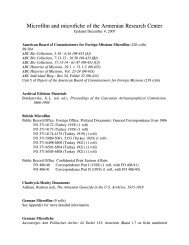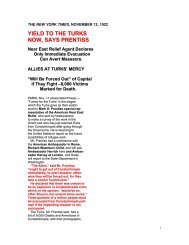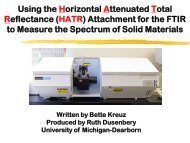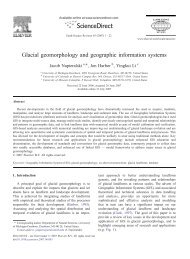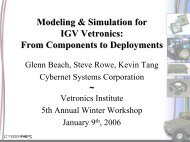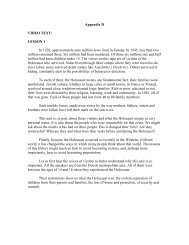Introduction to On Board Diagnostics (II)
Introduction to On Board Diagnostics (II)
Introduction to On Board Diagnostics (II)
Create successful ePaper yourself
Turn your PDF publications into a flip-book with our unique Google optimized e-Paper software.
Fundamentals of PowertrainControl strategies & OBD <strong>II</strong><strong>Diagnostics</strong>The fault codes are displayed by flashing the “Check Engine” light and entering thedisplay mode. Each fault code is displayed in sequence starting with the code thatchecks that all display segments are working correctly.After verifying that all display segments are working, the fault codes for all componentfailures are displayed in sequence, beginning with the lowest and proceeding <strong>to</strong> thehighest code. The mechanic notes the fault codes that are displayed , and using areference manual, identifies the failed components. The fault codes must comply withthe SAE J 2012 standard. After all fault codes are displayed, special code appearson the display indicating the end of display, and the engine control system awaitsfurther action by the mechanic.Typically the “check engine” light on the instrument panel is illuminated whenever anyfault occurs. For emissions related faults the MIL light will not go out until cleared frommemory by the mechanic. For non-emissions related faults the MIL light goes outau<strong>to</strong>matically if the malfunction clears. However the PCM s<strong>to</strong>res the DTC associatedwith the detected failure until the diagnostic system is manually cleared oruntil a specified number of engine cycles (twenty) occur with no malfunction. Forsome DTCs (of lesser consequence) there is no activation of the “check engine” MIL light.



